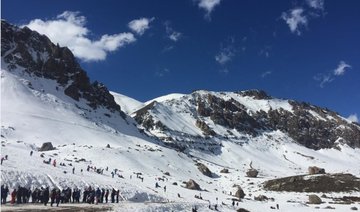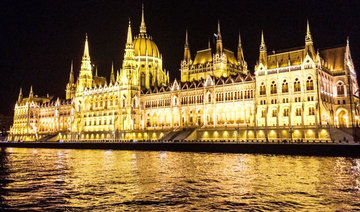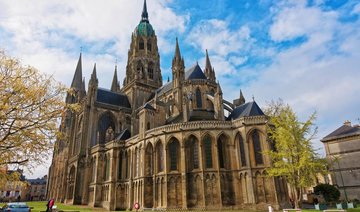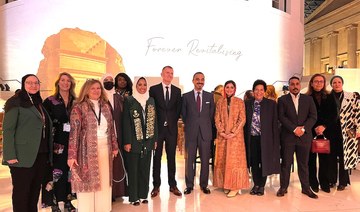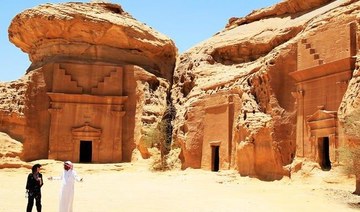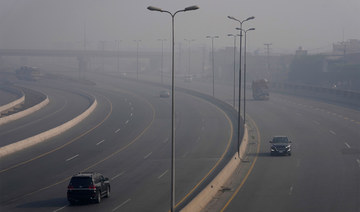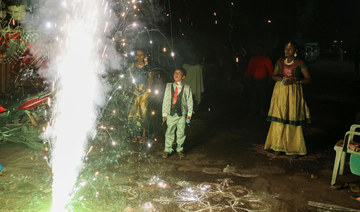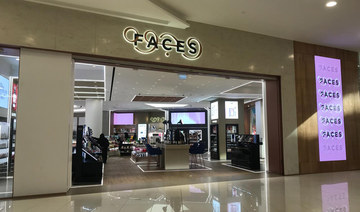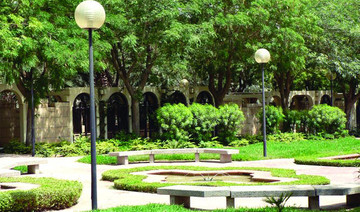BARCELONA: It was 80 years ago this summer that a wounded George Orwell was fortunate to escape Spain with his life.
The British author had arrived in Barcelona in December 1936, five months after the Spanish Civil War erupted, to join the government’s fight against Nationalist faction, whose army-led fascist rebellion had torn Spain asunder.
But it was not General Franco's forces from whom he fled — it was from his own side, the Republicans.
“Homage to Catalonia,” published in 1938, is Orwell’s account of his experiences and so lucid is his writing that it is easy to follow in his footsteps around what has become the tourist heart of Barcelona.
Once a niche activity among sightseers in the city — the third most visited in Europe and increasingly popular among Arab tourists — Orwell tours are in growing demand as a group of English expat guides help Spain recover a period of its history many would rather forget.
Orwell was among the 35,000 foreign volunteers who fought for the Republic in a civil war sparked by the army’s refusal to accept modest reforms to help Spain’s poor. More than 500,000 people died in the war.
On arriving in Barcelona, Orwell describes a city in which the “working class was firmly in the saddle” after anarchists formed an unlikely alliance with government forces to thwart the military uprising in Catalonia.
The social order was razed; about 2,000 businesses — including shops, factories and hotels — were collectivized as anarchists exploited enfeebled state authority to launch a revolution.
After rudimentary training, Orwell and his fellow militiamen were dispatched to the Aragon front, which was about 300 kilometers to the east. With fighting concentrated around Madrid and the south, Orwell’s biggest battle was against the cold and when he returned to Barcelona on leave in late April, the city was starkly different. Revolutionary fervor had dissipated and class distinctions of wealth and privilege were reappearing.
“Under the seeming gaiety of the streets, with their flower-stalls, their many-colored flags, their propaganda-posters and thronging crowds, there was an unmistakable and horrible feeling of political rivalry and hatred,” Orwell wrote in Homage to Catalonia.
“People of all shades of opinion were saying forebodingly: ‘There’s going to be trouble before long.’ The danger was quite simple and intelligible. It was antagonism between those who wished the revolution to go forward and those who wished to check or prevent it —ultimately, between anarchists and communists.”
Aided by Hitler’s Germany and Mussolini’s Italy, Franco’s forces swiftly captured more than half of Spain’s landmass, although by mid-1937 the major cities of Madrid, Valencia and Barcelona remained free.
Tit-for-tat murders stoked tensions in Barcelona, but that only forestalled the violence that would claim about 500 lives in less than a week.
On May 3, the communist-run Assault Guards stormed Barcelona’s telephone exchange in Plaça de Catalunya, which was under anarchist control. As word spread that worker-held buildings were under attack, armed anarchists took to the streets, fighting erupted and barricades were hastily built from cobblestones as myriad groups defended their turf.
Orwell was walking down La Ramblas, Barcelona’s most famous street and one that runs south from Plaça de Catalunya, when he heard gun shots crackle around him. He turned and saw rifle-wielding anarchist youths, their red and black handkerchiefs around their throats, edge up Carrer de Sant Pau, a side road off the main thoroughfare, to return fire at the Assault Guards who were shooting indiscriminatingly from the octagonal church tower of the Santa Maria del Pi.
Orwell fled to Hotel Falcon on La Ramblas, which today is the Biblioteca Gotic library. At the time, it was a boarding house for members of his militia, The Workers' Party of Marxist Unification (POUM).
Assault Guards seized Café Moka, situated 700 meters north on La Ramblas, which still operates under the same name. They were preparing to storm the POUM newspaper office next door, which today is the Hotel Rivoli. Orwell manned the roof of the Cinema Poliorama opposite, now a theatre, to deter the attack and he remained there for three nights until the fighting ended.
On May 7, heavily-armed reinforcements arrived from Valencia, the temporary seat of Spain’s legitimate government, enabling the state to reassert its control over the city.
Orwell soon returned to the trenches of Aragon, where a few weeks later he was shot through the throat by a sniper. He was shunted between hospitals in Catalonia’s hinterland, before arriving at Barcelona’s Sanatorium Maurín.
Barcelona’s atmosphere was toxic, tension heightened by expectations that street-fighting would resume.
“There were times when I caught my ears listening for the first shots. It was as though some huge evil intelligence were brooding over the town,” Orwell wrote. “Everyone noticed it and remarked upon it. And it was queer how everyone expressed it in almost the same words: ‘The atmosphere of this place — it’s horrible. Like being in a lunatic asylum’.”
Orwell decided to leave Spain and spent five days near the front obtaining discharge papers, returning to Barcelona around June 23. Unknown to him, the POUM had been outlawed and he was now a fugitive from the Republic government he had come to Spain to fight for.
Helped by the British Consulate, Orwell and his wife obtained the necessary papers to leave and fled by train to France in 1937.
In his writings, Orwell lambasts Soviet Russia for pushing Spain’s government to crush the nascent revolution and then for pretending it ever existed, arguing this ultimately led to its defeat. Orwell warned against his own bias and mistakes, admitting it was impossible to be entirely objective and 80 years later, his work is under scrutiny.
“Homage to Catalonia is probably the most bought and read book on the Spanish civil war and, because it only deals with a tiny portion of the war and yet makes very sweeping conclusions, it has had a toxic effect on the thinking about the Spanish Civil War,” Paul Preston, a world-authority on 20th century Spanish history, told Arab News.
The war shaped Orwell’s thinking in writing “1984,” a satire on totalitarianism published in 1949 in which the main protagonist works for the Ministry of Truth, rewriting history.
“What impressed me then, and has impressed me ever since, is that atrocities are believed in or disbelieved in solely on grounds of political predilection,” Orwell wrote. “The truth, it is felt, becomes untruth when your enemy utters it.”
In writing “1984,” Orwell created phrases and ideas that have entered the public consciousness such as “Big Brother” and “Room 101.”
Without his experience in Spain, this seminal book may never have been written.
“Homage to Catalonia was the genesis of everything he hated about totalitarianism and was the genesis of both ‘Animal Farm’ and ‘1984’,” Richard Blair, Orwell’s adopted son, told Arab News.
“When he got back to Barcelona after being wounded he discovered he was being hunted and I think that’s where he suddenly realized what totalitarianism was all about.”
Take a self-guided tour
Visitors hoping to follow in Orwell’s footsteps can take in all the main sights with a 1.2 kilometer stroll starting at Plaça de Catalunya, the sprawling square at the top of La Ramblas and the emotional center of Barcelona. On the north side is the present-day Apple shop where, during the Civil War, the Hotel Colon stood. This hotel was seized by Catalonia’s Communist party (PSUC) as its headquarters.
At the most easterly point of the square, where Avengida del Portel de l’Angel meets Carrer de Fontanella, lies the Mobile World building.Then a telephone exchange controlled by the anarchist union CNT, the Catalan police stormed this building, sparking the Barcelona bloodbath Orwell describes in Homage to Catalonia.
Next, you should head to La Ramblas, the city’s most famous street, which begins at Plaça de Catalunya’s southerly point.
Just a few doors down from the El Cortes Ingles department store, on the left-hand side, is the Hotel Continental, where Orwell’s wife, Eileen Blair, was staying when the author became a hunted man.
Then, walk 160 meters further down La Ramblas to Café Moka, which Assault Guards seized ahead of an expected attack on the POUM’s newspaper office next door. Today, it is the Hotel Rivoli. Opposite is a modern-day theater, once known as the Cinema Poliorama, where Orwell was stationed for several days to provide sniper protection for the newspaper office below.
Next, walk for another 400 meters until you see Carrer de Sant Pau to your right. It was from this side street that Orwell witnessed a gun battle between anarchists at ground level and Assault Guard snipers positioned in the octagonal church tower of Santa Maria del Pi, which will be to your left, on the opposite side of La Ramblas.
A further 350 meters south is the Biblioteca Gothic-Andre Nin, named after POUM’s leader. In 1937, this building was Hotel Falcon, a boarding house for POUM militiamen.
See Barcelona through George Orwell’s eyes
See Barcelona through George Orwell’s eyes
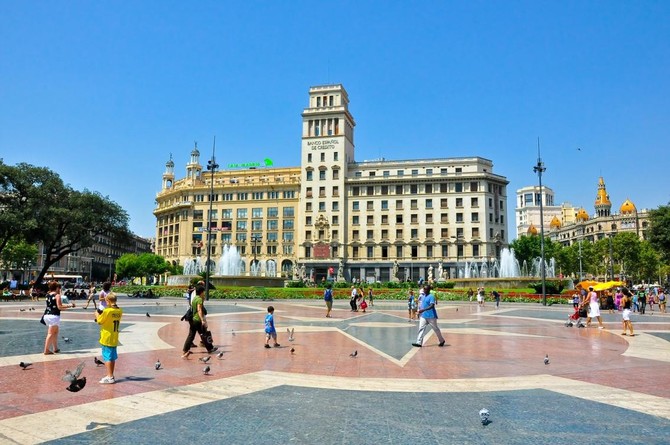
Eid escapes: A guide to relaxing holiday destinations in the Kingdom
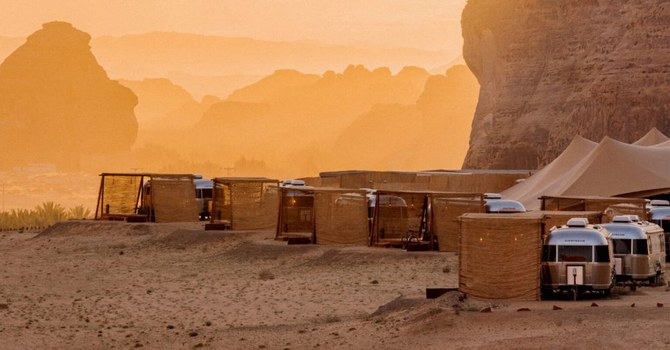
- Saudi Arabia’s diverse landscapes beckon adventurers to explore its natural wonders
- Saudi Arabia’s renowned tourism project, The Red Sea, is welcoming guests with the opening of The St. Regis Red Sea Resort
JEDDAH: After a month of worship, many people during Eid Al-Fitr break seek fun and relaxation. For those looking for a serene and rejuvenating destination, Saudi Arabia offers an array of options. From luxury resorts to sustainable desert getaways, the Kingdom provides diverse choices to suit all preferences.
Here is a curated list of destinations for a perfect Eid getaway.
The St. Regis Red Sea Resort
Saudi Arabia’s renowned tourism project, The Red Sea, is welcoming guests with the opening of The St. Regis Red Sea Resort. Situated on the Ummahat Islands in the Al-Wajh Lagoon, this luxurious resort features 90 beachfront and overwater villas, each boasting private pools and stunning views. Designed by architect Kengo Kuma, the resort’s aesthetic reflects the beauty of coral reefs and dunes. Guests can dine al fresco at five beachside venues and enjoy Japanese-inspired cuisine at Gishiki 45 and Tilina. The resort offers a spa, gym, and outdoor lap pool, all powered by renewable energy. Rates start from $1,866 per night.
Six Senses Southern Dunes
Nestled amid rolling dunes and the Hijaz Mountains, Six Senses Southern Dunes offers a unique retreat. With rooms, suites, and villas designed under tent-like roofs, the resort blends modern luxury with traditional charm. Guests can enjoy spacious accommodations with outdoor terraces and private pools. The resort’s spa spans 4,000 square feet and offers a range of treatments. Activities include cooking classes and fishing tours, and dining options cater to diverse palates. Rates start from SR4,380 ($1,168) for a Wadi King Room, with a commitment to sustainability.
AlUla: A haven of history and natural beauty
Located in the northwest of Saudi Arabia, AlUla is renowned for its rich history, stunning landscapes, and archaeological wonders. Home to UNESCO World Heritage Sites like the Nabatean tombs at Hegra and ancient rock art, AlUla offers visitors a glimpse into ancient civilizations. The region is undergoing extensive development to enhance its tourism infrastructure while preserving its cultural heritage and natural beauty.
Here are some top accommodations in AlUla for an unforgettable Eid escape experience:
Habitas AlUla: A sustainable desert resort offering luxury accommodations amid the desert canyons of the Ashar Valley, Habitas AlUla features 96 guest villas, each designed to blend seamlessly with the surrounding landscape. Guests can enjoy a range of facilities, including wellness centers, dining options, and a large infinity swimming pool.
Caravan by Habitas AlUla: Caravan provides a unique luxury camping experience in the picturesque Ashar Valley with exclusive Airstream trailers offering either an oasis or mountainous view. Each of the 22 deluxe trailers features panoramic views, air conditioning, WiFi, a queen-size bed (or two single beds), an indoor lounge, a kitchenette, and a private shower and bathroom. Prices range from SR1500 to SR2500 per night.
Ashar Tented Resort: Nestled amid the sweeping desert sands and rugged rock formations of the Ashar Valley, this luxury camping experience immerses guests in AlUla’s spectacular scenery. With access to five-star facilities at the neighboring Banyan Tree Hotel, guests can enjoy a comfortable and memorable stay.
Banyan Tree AlUla: Offering breathtaking views of the Ashar Valley, Banyan Tree AlUla features 47 elegant tented villas adorned with authentic Arabian-inspired details. Committed to sustainability and well-being, the resort advocates for environmental conservation and cultural preservation.
Whether you seek luxury, tranquility, or cultural immersion, AlUla offers a range of experiences to suit every traveler’s preference.
Explore the region’s rich history, breathtaking landscapes, and unparalleled hospitality for an unforgettable Eid getaway: www.experiencealula.com.
Adventures and sightseeing
Many seek the perfect getaway to unwind and connect with nature. In Saudi Arabia, adventure-seekers have a plethora of options thanks to the diverse terrains that span the Kingdom. From sandy deserts to rugged mountains and lush valleys, there is something for everyone to explore.
Guiding adventurers across the Kingdom
Saudi Trips, a leading adventure agency, offers a range of trips and hikes across the Kingdom. Founded by Ibrahim Saad, the agency aims to provide visitors with the best Eid experience, tailored to their preferences and budget.
Saad highlights some of the prime camping and hiking spots, including the iconic AlUla region, the mysterious Dark Cave in Tabuk, and the picturesque Wadi Al-Disah in Jazan.
“In my opinion, the best destinations during Eid break are the sandy areas, caves, and valleys,” Saad told Arab News. “Activities vary according to the terrain, including walking on the sand, mountain climbing, and descending.”
Other notable destinations Saad mentioned include Lajab Valley, the Caravans Trail along the Tuwaiq Mountains, Thumama, and Mount Qarah in the Eastern Province.
Happy escape
For those seeking a unique experience, Ahway, a Saudi tourism project, offers well-equipped caravans in scenic locations. Founded by Saeed Azhar, Ahway aims to promote local tourism while providing visitors with a chance to disconnect from city life and immerse themselves in nature. Starting in Taif, the project plans to expand to other regions like AlUla and Tabuk, offering guests a chance to explore Saudi Arabia’s stunning landscapes.
Diverse landscapes
Khalid Al-Rabiah, CEO of Ghamra Adventures Agency, spoke to Arab News about the allure of Saudi Arabia’s diverse landscapes during Eid.
“Being in a large city like Riyadh, the nearby areas, especially Thadiq National Park and the dunes and valleys of Rughabah Village, are considered prime destinations for Eid escape, especially with their unique nature and the presence of hiking trails and mountain ridges spanning over 70 km.
“There is also a growing trend of camping in the unique natural environments of Hail and Tabuk, known for their peculiar mountains with strange formations and golden sands.”
Ali Al-Abdali, a tour guide in Jazan, describes the region as a haven for hiking and wilderness enthusiasts not only for the Eid holiday but throughout the year.
From stunning beaches along the Red Sea to rugged mountains like Al-Ardah and Al-Rayth, Jazan offers diverse landscapes for outdoor activities.
As Eid approaches, Saudi Arabia’s natural attractions beckon adventurers, both local and international, to explore and create unforgettable memories amid breathtaking scenery.
Bulgaria, Romania take first steps into Europe’s visa-free zone

- New status will not apply to land routes, after Austria veto over fears of a potential influx of asylum seekers
- Schengen zone will now comprise 29 members, including 25 EU member states plus Switzerland, Norway, Iceland and Liechtenstein
BUCHAREST: Bulgaria and Romania joined Europe’s vast Schengen area of free movement on Sunday, opening up travel by air and sea without border checks after a 13-year wait.
A veto by Austria, however, means the new status will not apply to land routes, after Vienna expressed concerns over a potential influx of asylum seekers.
Despite the partial membership, the lifting of controls at the two countries’ air and sea borders is of significant symbolic value.
Admission to Schengen is an “important milestone” for Bulgaria and Romania, symbolizing a “question of dignity, of belonging to the European Union,” according to foreign policy analyst Stefan Popescu.
“Any Romanian who had to walk down a lane separate from other European citizens felt being treated differently,” he told AFP.
Ivan Petrov, a 35-year-old Bulgarian marketing executive who lives in France, said he was enthusiastic about less stressful traveling and the time he would be able to save.
“This is a great success for both countries, and a historic moment for the Schengen area — the largest area of free movement in the world,” EU chief Ursula von der Leyen said in a statement Saturday.
“Together, we are building a stronger, more united Europe for all our citizens.”
With Bulgaria and Romania arriving joining Sunday, the Schengen zone will comprise 29 members — 25 of the 27 European Union member states as well as Switzerland, Norway, Iceland and Liechtenstein.
Romania’s government said Schengen rules would apply to four sea ports and 17 airports, with the country’s Otopeni airport near the capital Bucharest serving as the biggest hub for Schengen flights.
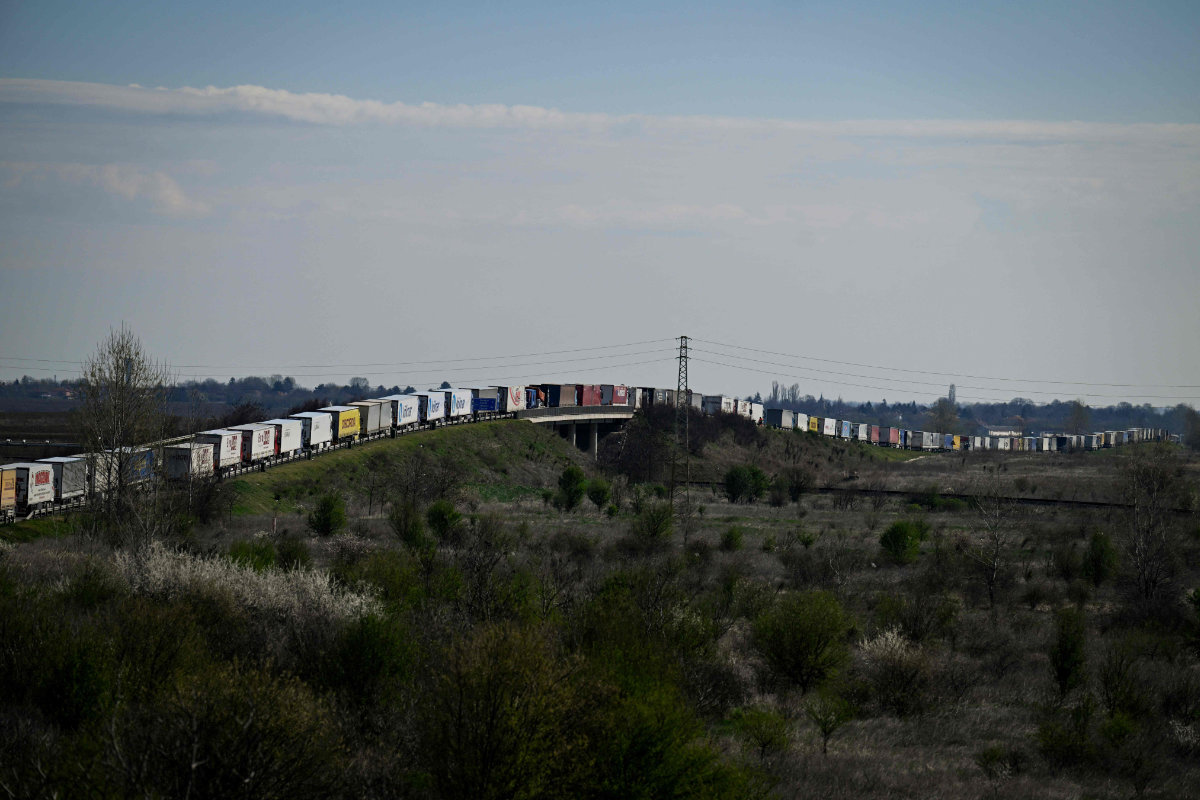
More staff including border police and immigration officers will be deployed to airports to “support passengers and detect those who want to take advantage to leave Romania illegally,” it added.
Random checks will also be carried out to catch people with false documents and to combat human trafficking.
Bulgaria and Romania both hope to fully integrate into Schengen by the end of the year, but Austria has so far relented only on air and sea routes.
Croatia, which joined the EU after Romania and Bulgaria, beat them to becoming Schengen’s 27th member in January 2023.
Created in 1985, the Schengen area allows more than 400 million people to travel freely without internal border controls.
While some have reason to celebrate, truck drivers, faced with endless queues at the borders with their European neighbors, feel left out.
Earlier this month, one of Romania’s main road transport unions the UNTRR called for “urgent measures” to get full Schengen integration, deploring the huge financial losses caused by the long waits.
“Romanian hauliers have lost billions of euros every year, just because of long waiting times at borders,” secretary general Radu Dinescu said.
According to the union, truckers usually wait eight to 16 hours at the border with Hungary, and from 20 to 30 hours at the Bulgarian border, with peaks of three days.
Bulgarian businesses have also voiced their anger over the slow progress.
“Only three percent of Bulgarian goods are transported by air and sea, the remaining 97 percent by land,” said Vasil Velev, president of the Bulgarian Industrial Capital Association (BICA).
“So we’re at three percent in Schengen and we don’t know when we’ll be there with the other 97 percent,” he told AFP.
Bucharest and Sofia have both said that there will be no going back.
“There is no doubt that this process is irreversible,” Romanian Interior Minister Catalin Predoiu said this month, adding it “must be completed by 2024 with the extension to land borders.”
Georgina Rodriguez, Cristiano Ronaldo explore Red Sea coast in Saudi Arabia

DUBAI: Football star Cristiano Ronaldo and his partner, Argentinian model Georgina Rodriguez, are on a mission to explore Saudi Arabia — their most recent excursion was a visit to the Kingdom’s coastline, which the model shared on social media.
“Love in paradise. We keep discovering Saudi Arabia,” Rodriguez posted from a Red Sea resort, while tagging @VisitSaudi, the official tourism account of Saudi Arabia. The photographs include shots of the couple and their children enjoying a day at the beach before posing for a photograph on an overwater deck.
The Al-Nassr footballer often uses his downtime to explore the country and was spotted in AlUla in December.
“Amazed by the extraordinary human and natural heritage of AlUla here in Saudi Arabia,” he wrote on Instagram at the time.
The couple enjoyed a romantic dinner and visited AlUla’s Maraya, a multi-purpose venue that holds the Guinness World Record as the largest mirrored building with 9,740 glass panels. It is located 12 km from Saudi Arabia’s first UNESCO World Heritage site, Hegra.
Rodriguez has also been enjoying Saudi Arabia’s social scene without her famous partner —earlier in March she was seen at an event hosted by Saudi perfume label Laverne in Riyadh.
The Netflix star, who has her own reality show titled “I Am Georgina,” took control of the brand’s Snapchat account, offering followers an exclusive glimpse into her experience at the event.
In March 2023, Rodriguez collaborated with the brand on a campaign — and she answers candid questions about her time in the Kingdom in the new clip.
“I feel very safe in this country and really appreciate its family values,” she said in the stylish video posted on social media at the time.
Thai tourist hotspot Chiang Mai tops world’s most polluted cities
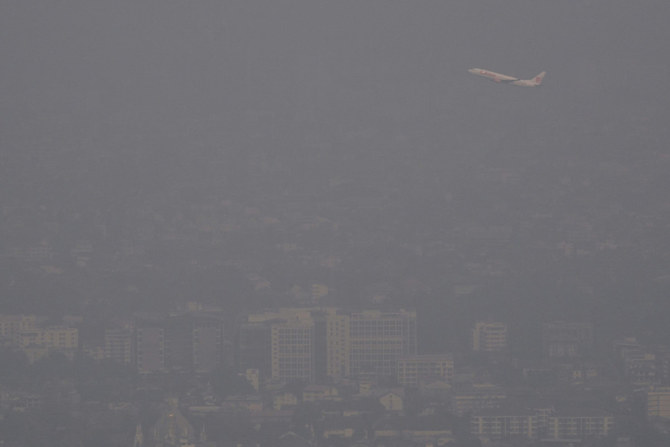
- High levels of pollution frequently hit Chiang Mai during the early months of the year when farmers often burn crops to clear land
- Located in the north, Thailand's second largest city has a population of 1.2 million people as of 2022
CHIANG MAI, Thailand: Thai tourist hotspot Chiang Mai was blanketed by hazy smog Friday, as residents and visitors to the usually picturesque northern city were left wheezing in the toxic air.
The country's second largest city topped air monitoring website IQAir’s table of the world’s most polluted cities early Friday.
Levels of PM2.5 pollutants — cancer-causing microparticles small enough to enter the bloodstream through the lungs — were classified as “very unhealthy” and hit more than 35 times the World Health Organization’s annual guideline.
“It’s very high. All I have is this mask which is the same one I used for Covid,” orange seller Kamol, 62, told AFP at the city’s Warorot Market.
Thailand’s former prime minister Thaksin Shinawatra, who was recently freed early from a jail sentence for graft and abuse of power following 15 years in self-exile, visited the market on Friday, donning a face mask while he posed for photos with well-wishers.
High levels of pollution frequently hit Thaksin’s hometown of Chiang Mai during the early months of the year when farmers often burn crops to clear land, and forest fires and exhaust fumes also add to the problem.
Rising awareness of the health implications has prompted some action from the government, with Prime Minister Srettha Thavisin’s cabinet approving a Clean Air Act to tackle the issue in January.
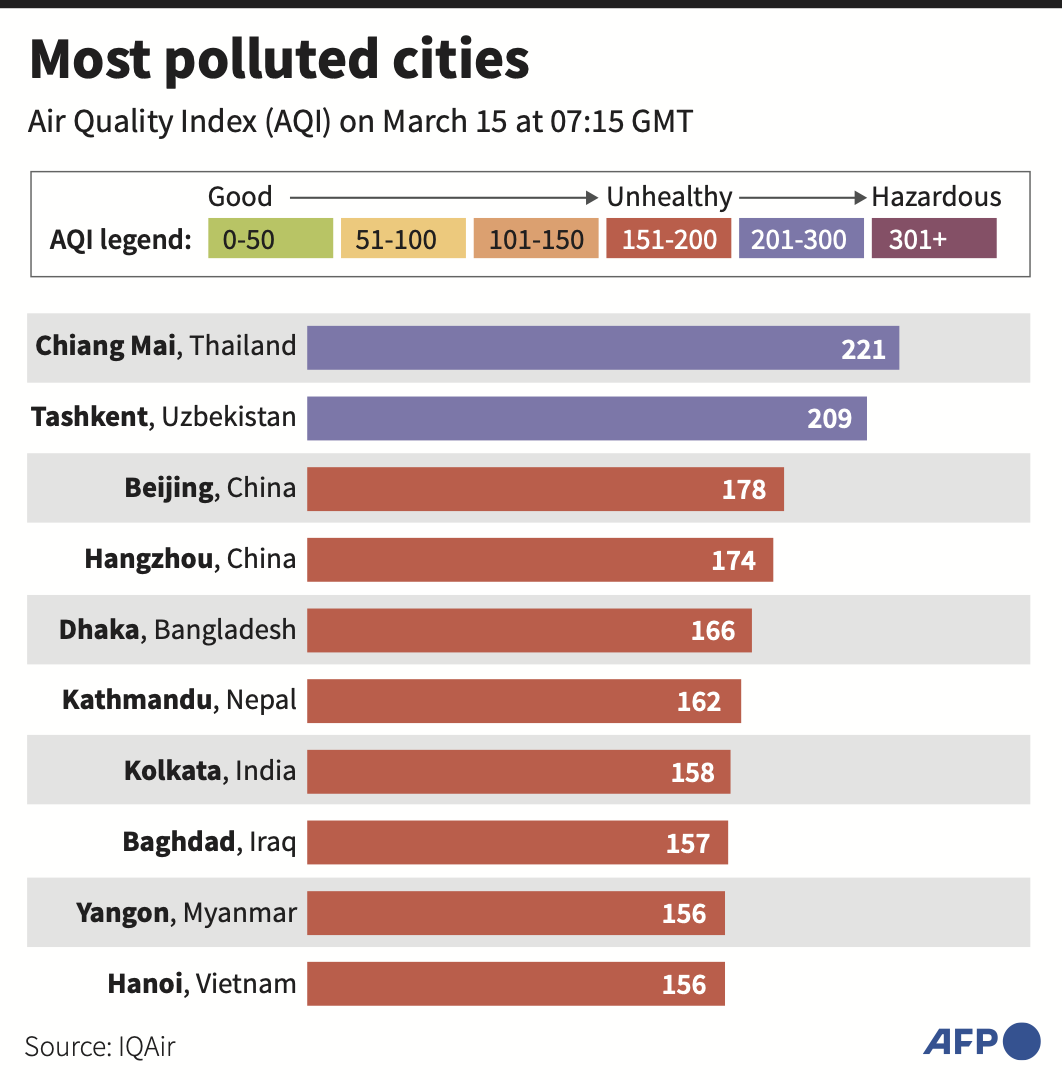
The premier is also due to visit later Friday and is expected to meet with organizations tackling forest fires on Saturday.
But Chiang Mai residents — like orange seller Kamol, who sighed and shook his head when asked — said they had received no help.
“I need to get my health checked every year, especially for respiratory diseases,” he said.
A government agency warned this month that more official action was needed, saying at least 10 million people required treatment for pollution-related health problems last year.
“The pollution is always high, especially this time of year,” said 50-year-old Sariya while shopping for groceries in Chiang Mai.
“There is nothing we can do about it since it’s always high.”
Sariya, who gave only one name, also said the city’s location — nestled between hills, trapping the toxic smog — made the situation worse.
But he was “more worried” about people living there with underlying health issues, adding: “We need to help ourselves.”
Last year, sky-rocketing levels of pollution saw international tourists discouraged from visiting, with vendors despairing for business, as the Thai Hotel Association Northern Chapter also warned domestic visitors were canceling bookings.
But in Chiang Mai on Friday, the streets were filled with ambling tourists who seemed unperturbed by the smog.
“I’m not afraid of the pollution,” said 32-year-old Chinese tourist Andy, visiting from Chengdu, who said his country also suffered from poor air pollution.
“I just enjoy the city because it’s very nice.”
French programmer Guillaume Tieufri, 44, said the pollution had not spoilt his four-day trip.
“You just have to go on and live your day.”
Work begins on Al-Urubah Park in Riyadh
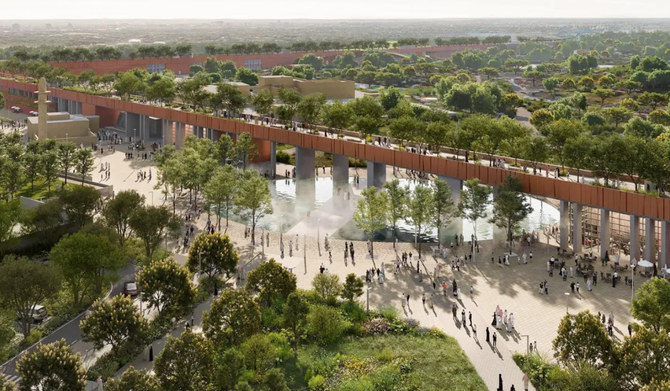
- More than 600,000 trees and shrubs will be planted, covering 65 percent of the park’s area
RIYADH: The Royal Commission for Riyadh City announced on Sunday that construction work had started on Al-Urubah Park, which will span 754,000 square meters.
The park’s location, at the intersection of Prince Turki bin Abdulaziz Road and Al-Urubah Road, will enable easy access from all parts of the city.
Al-Urubah Park will attempt to enhance quality of life by providing recreational spaces for residents and visitors, contributing to making Riyadh one of the most sustainable cities in the world.
This initiative is part of the Green Riyadh Project, one of the world’s most ambitious urban afforestation schemes, which aims to plant 7.5 million trees and increase vegetation cover to 9 percent of the city’s area.
The park will feature a 3 km panoramic path and a viewpoint showcasing the city’s landmarks. More than 600,000 trees and shrubs will be planted, covering 65 percent of the park’s area. Sports facilities throughout the park will cater to different age groups.
The design also incorporates modern technologies to showcase natural elements, offering visitors an interactive experience through augmented reality.
The unique garden design to international specifications was selected from among several ideas submitted by six contestants. The winning design concept achieves sustainability and conforms to environmental standards.
The Green Riyadh Project focuses on planting in residential neighborhoods, gardens, mosques, schools, government and public buildings, and parking spaces. In addition, a water network covering some 1,350 km is being created.




